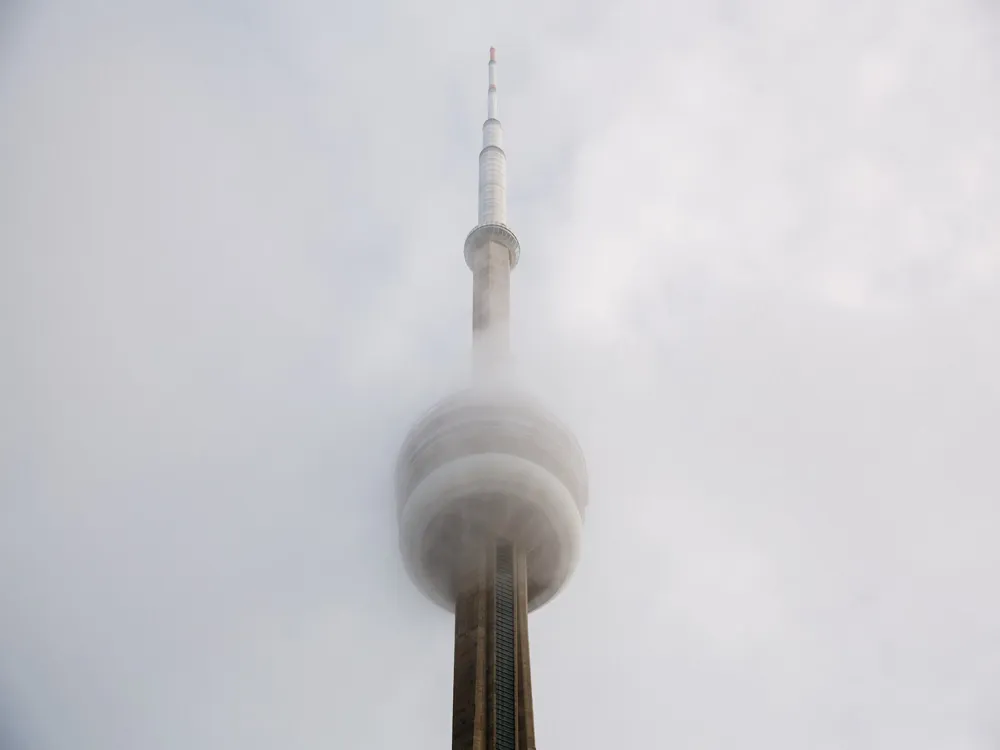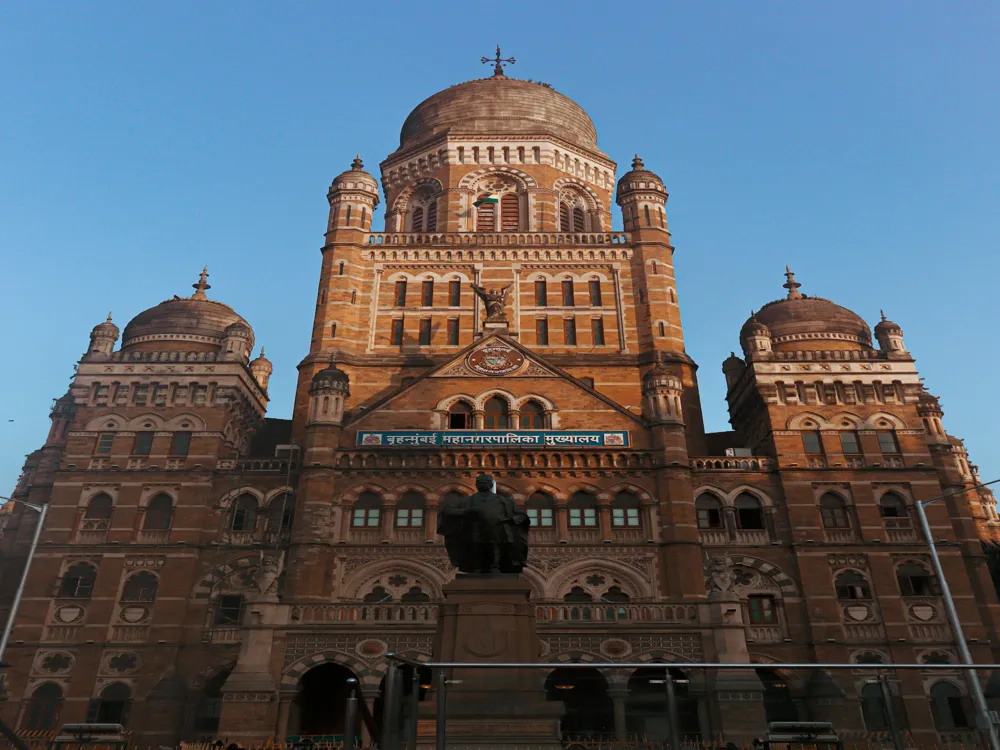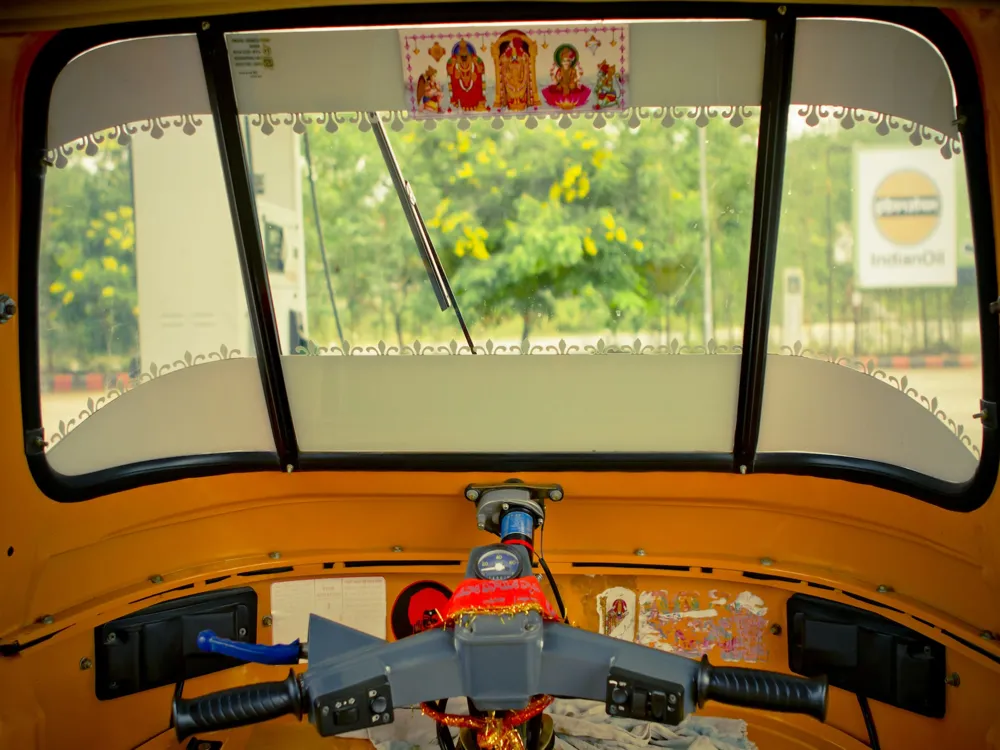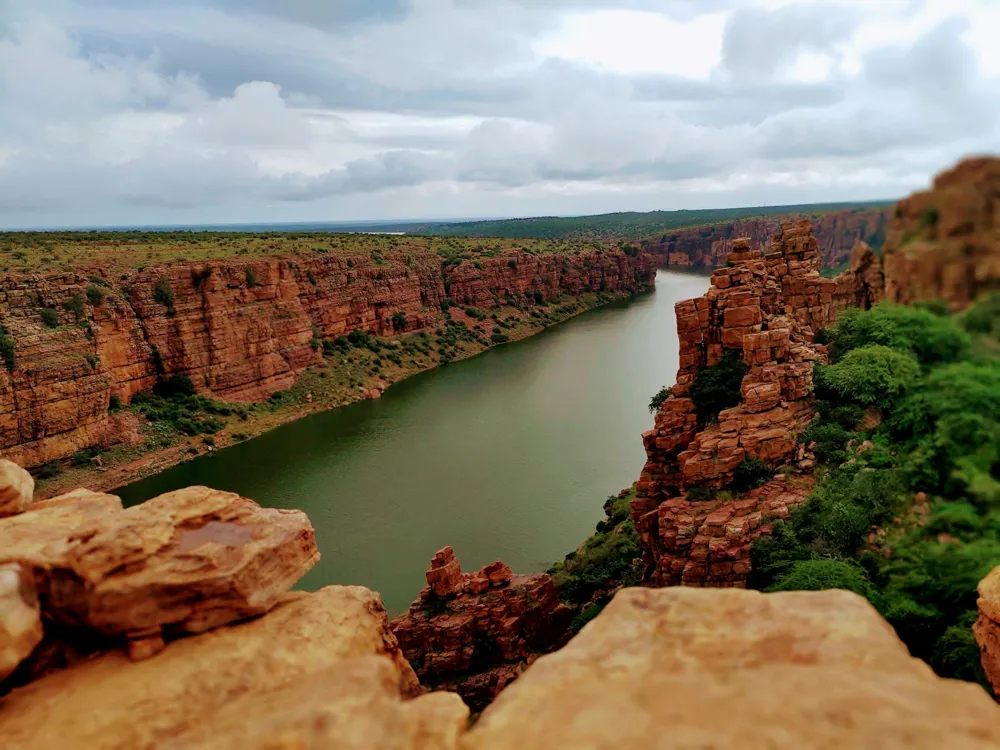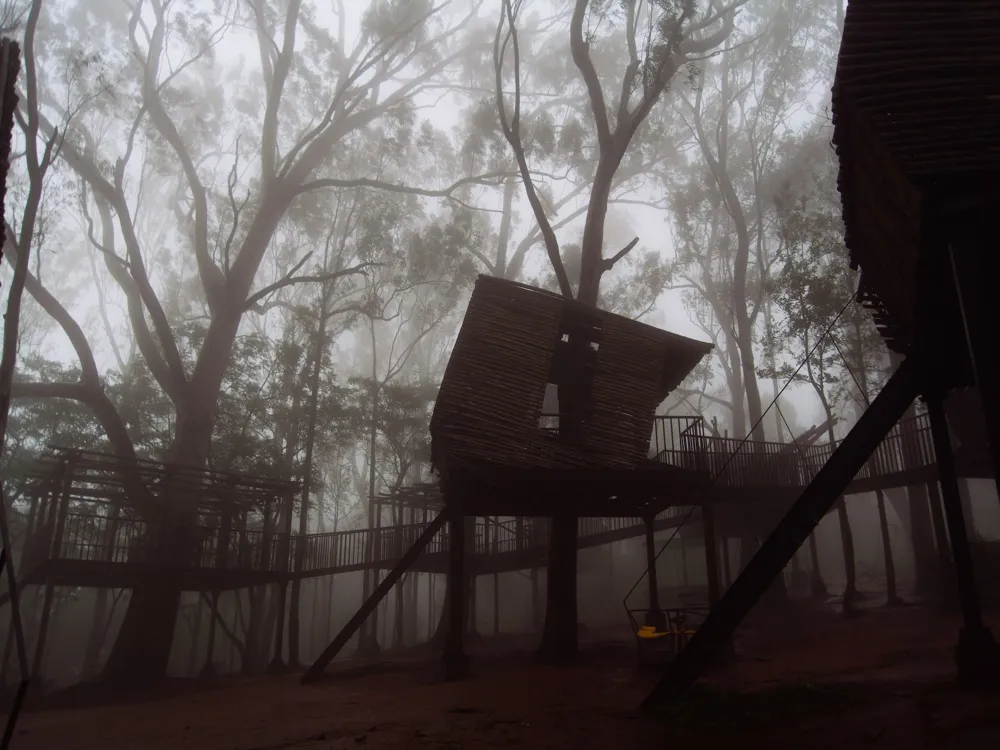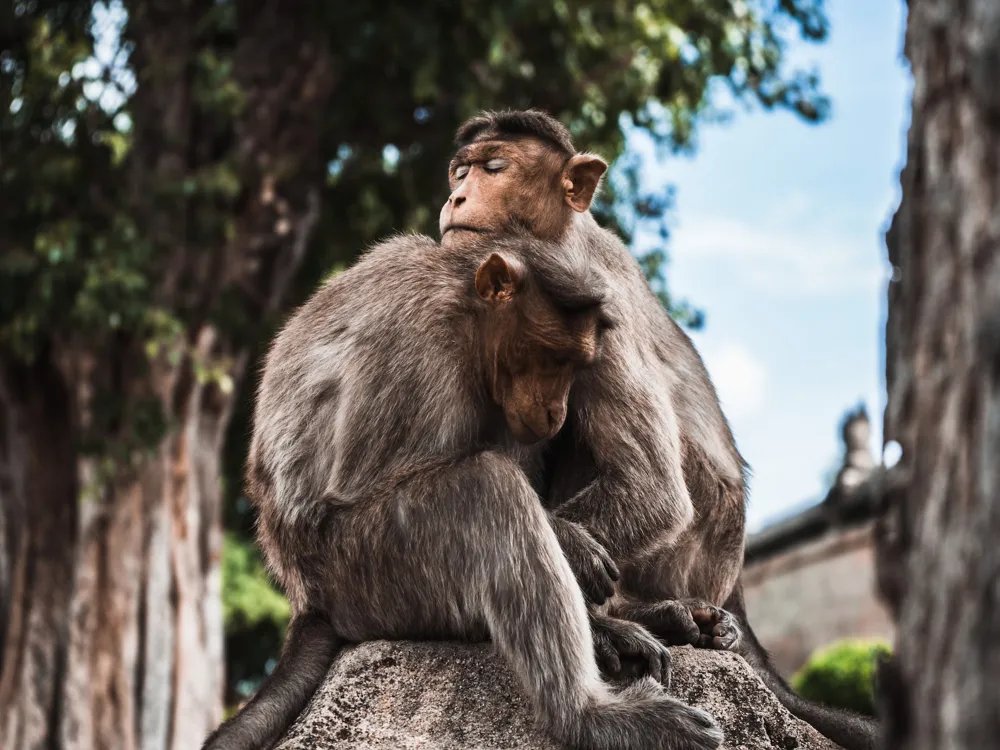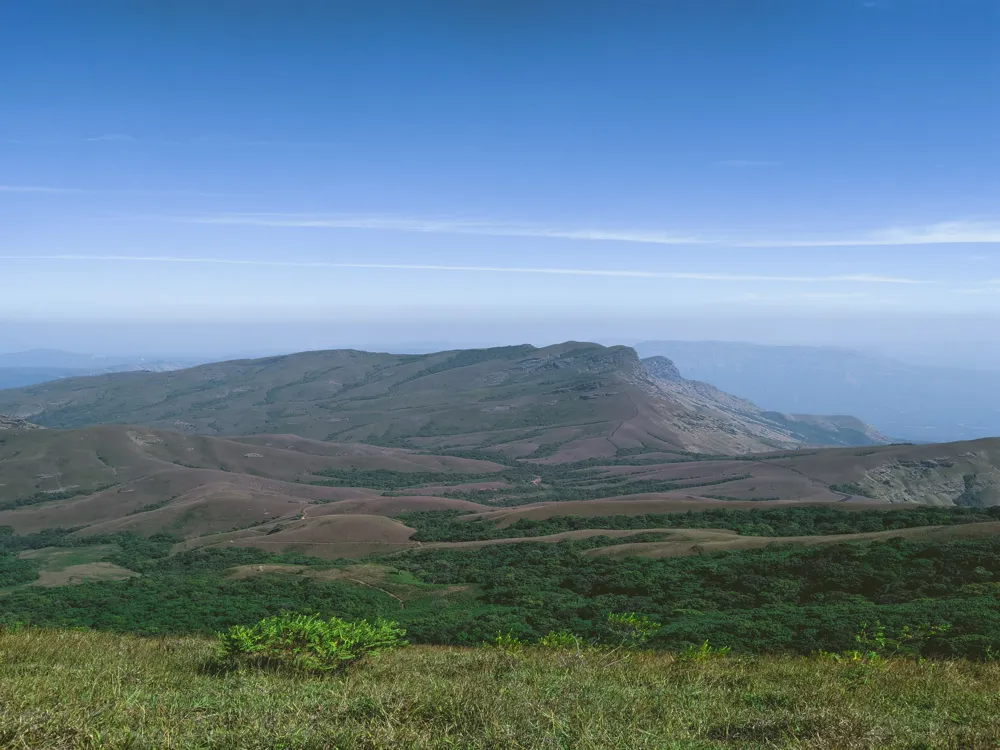Gooty Fort, a historical edifice in Anantapur, Andhra Pradesh, is a testament to India's rich cultural heritage. Perched atop a hill at an elevation of about 300 meters, the fort offers panoramic views of the surrounding plains. Its origins trace back to the 7th century, and over the centuries, it has witnessed the rise and fall of several dynasties including the Vijayanagara Empire, the Sultanate of Golconda, and the British Raj. The fort's strategic location made it a coveted prize for rulers. It served not just as a military bastion but also as a center of administration. The fort complex includes temples, granaries, prisons, and residential quarters, each telling a story of the past. The architecture of Gooty Fort reflects the various cultural influences it underwent, with elements from Hindu, Islamic, and colonial styles harmoniously blended. Visitors to Gooty Fort are greeted by its imposing stonework and the seven gates, each historically significant. The main gate, known as 'Yerramanchi Gate', is a marvel of medieval engineering. Inside, the ruins of a palace, an audience hall, and several temples, including the ancient Narasimha Swamy temple, captivate visitors. The fort's location and design also highlight the advanced understanding of geography and military architecture of its builders. Today, Gooty Fort stands as a relic of the past, inviting history enthusiasts, photographers, and tourists to explore its corridors and learn about its rich and diverse history. The architecture of Gooty Fort is a confluence of various styles, influenced by the different dynasties that ruled over it. Predominantly, the fort exhibits the traditional Dravidian architectural style, with influences from Islamic and later British architecture. One of the standout features of the fort is its fortification walls, built from granite. These massive walls were designed to withstand sieges and are punctuated by bastions and watchtowers, offering strategic vantage points for defense. The fort’s layout is a testament to the advanced military architecture of its time, with its multiple layers of defense including moats, trapdoors, and secret passages. The main gate, Yerramanchi Gate, is an architectural marvel, showcasing intricate carvings and robust construction. Inside the fort, the ruins of palaces and administrative buildings exhibit a blend of Hindu and Islamic architectural elements. The ornate pillars, arched doorways, and domed structures within these buildings reflect the craftsmanship of the artisans of that era. The Narasimha Swamy Temple within the fort complex is a fine example of Hindu temple architecture, with its intricate carvings depicting mythological stories and figures. The temple’s main deity, Lord Narasimha, an avatar of Lord Vishnu, is revered by devotees who visit the temple regularly. The British influence on the fort’s architecture is seen in some of the newer structures built during their rule. These buildings feature more utilitarian designs, reflecting the colonial style of the era. Overall, the architecture of Gooty Fort is a visual narrative of the region’s history, showcasing the artistic and architectural prowess of the various rulers who left their mark on this magnificent structure. The ideal time to visit Gooty Fort is between October and March when the weather is pleasant. Summers can be quite hot, making exploration less comfortable. Since the fort is located atop a hill, it requires a bit of trekking. Comfortable footwear is a must for an enjoyable visit. There are limited facilities for food and water inside the fort complex, so it's advisable to carry your own, especially during the hot months. For a comprehensive understanding of the fort's history and architecture, consider hiring a local guide. They can provide insights that are not available in guidebooks. The fort offers stunning views and architectural details, making it a great spot for photography. However, be respectful of the site and adhere to any photography restrictions. Gooty Fort is a historical monument. Visitors should respect the site by not littering and by avoiding any actions that might damage the structures. Gooty Fort is accessible by various means of transportation. The nearest major city is Anantapur, approximately 52 kilometers away. Visitors can reach Gooty Fort via road, rail, or air. By Road: Gooty is well-connected by road to major cities like Bangalore, Hyderabad, and Anantapur. Regular bus services and taxis are available from these cities to Gooty. By Rail: Gooty has its own railway station, which is well-connected to major cities in India. From the railway station, the fort is a short drive away. By Air: The nearest airport is in Bangalore, which is around 305 kilometers away. From Bangalore, visitors can take a bus or hire a taxi to reach Gooty. Once in Gooty, local transport options like auto-rickshaws and taxis are available to take visitors to the fort. Read More:Overview of Gooty Fort in Anantapur, Andhra Pradesh
Architecture of Gooty Fort
Tips When Visiting Gooty Fort
Best Time to Visit
Wear Comfortable Footwear
Carry Water and Snacks
Hire a Guide
Photography
Respect the Site
How To Reach Gooty Fort
Gooty Fort
Anantapur
Andhra Pradesh
NaN onwards
View anantapur Packages
Weather :
Tags : Forts & Palaces
Timings : Monday to Sunday: 9:00 AM to 6:00 PM
Time Required : 1-2 Hours
Entry Fee : No Entry Fee
Planning a Trip? Ask Your Question
Anantapur Travel Packages
View All Packages For Anantapur
Top Hotel Collections for Anantapur

Private Pool

Luxury Hotels

5-Star Hotels

Pet Friendly
Top Hotels Near Anantapur
Other Top Ranking Places In Anantapur
View All Places To Visit In anantapur
Faq on Anantapur
What is Gooty Fort famous for?
Gooty Fort, also known as Ravadurg, is famous for its historical significance and architectural marvel. It served as a stronghold for various rulers throughout history.
What is the architecture of Gooty Fort like?
The architecture of Gooty Fort showcases a blend of Hindu and Islamic styles, reflecting the diverse cultural influences of its builders and occupants.
What are the visiting hours for Gooty Fort?
Gooty Fort is generally open to visitors during daytime hours. It's advisable to check locally for specific visiting hours as they may vary.
Is there a guided tour available at Gooty Fort?
Yes, guided tours are often available at Gooty Fort, providing visitors with insightful information about its history and significance.
What are the nearby attractions to Gooty Fort?
Some nearby attractions to Gooty Fort include the Hemavathi Reservoir and the Chintala Venkataramana Swamy Temple, offering tourists additional places to explore in the area.
View anantapur Packages
Weather :
Tags : Forts & Palaces
Timings : Monday to Sunday: 9:00 AM to 6:00 PM
Time Required : 1-2 Hours
Entry Fee : No Entry Fee
Planning a Trip? Ask Your Question
Anantapur Travel Packages
View All Packages For Anantapur
Top Hotel Collections for Anantapur

Private Pool

Luxury Hotels

5-Star Hotels

Pet Friendly
Top Hotels Near Anantapur
Other Top Ranking Places In Anantapur
Faq on Anantapur
What is Gooty Fort famous for?
Gooty Fort, also known as Ravadurg, is famous for its historical significance and architectural marvel. It served as a stronghold for various rulers throughout history.
What is the architecture of Gooty Fort like?
The architecture of Gooty Fort showcases a blend of Hindu and Islamic styles, reflecting the diverse cultural influences of its builders and occupants.
What are the visiting hours for Gooty Fort?
Gooty Fort is generally open to visitors during daytime hours. It's advisable to check locally for specific visiting hours as they may vary.
Is there a guided tour available at Gooty Fort?
Yes, guided tours are often available at Gooty Fort, providing visitors with insightful information about its history and significance.
What are the nearby attractions to Gooty Fort?
Some nearby attractions to Gooty Fort include the Hemavathi Reservoir and the Chintala Venkataramana Swamy Temple, offering tourists additional places to explore in the area.







